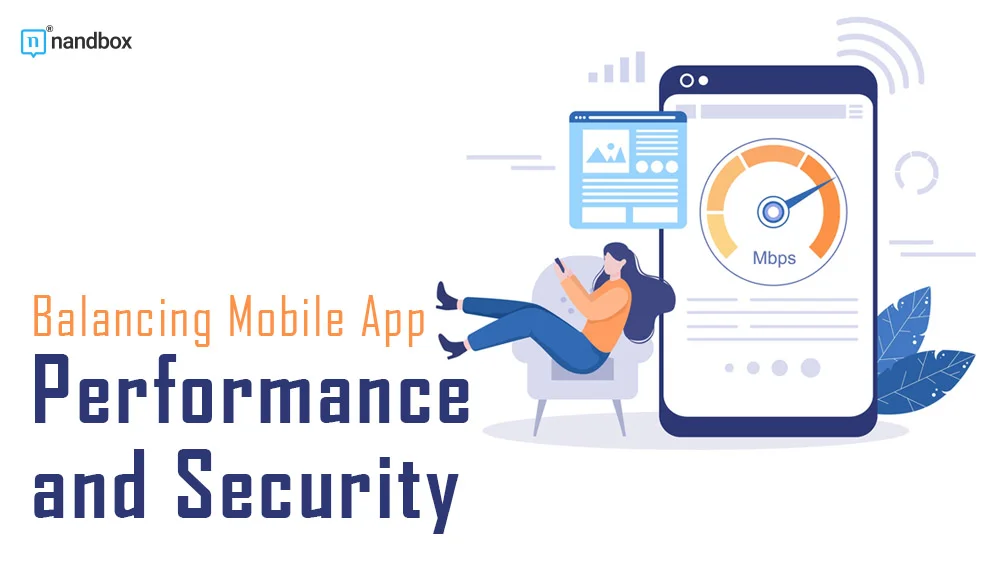How to Maintain a Balance Between App Performance and Security
In modern times, the world is expanding enormously, and to stimulate growth, technology and mobile app performance is acting as a catalyst in introducing the comfort of performing our tasks efficiently without making them appear complicated.
Mobile app developers make software applications for mobile devices. Android and iPhone are the two most popular operating systems for creating mobile apps. An excellent mobile app may help individuals accomplish their tasks more comfortably. Mobile Apps works to increase visibility, sales, productivity, brand recognition, and more. To remain competitive in the fast-paced business world of today, companies must have a website or a mobile application.
Understanding the ever-growing demand of business and the dynamic nature of technology, it is necessary to speed up the mobile app’s performance while securing it efficiently from any hazards.
The article introduces the business, readers mobile app developers etc with several techniques to optimise the memory usage, such as using appropriate data structures or avoiding object creation in hot methods. Furthermore, conducting regular monitoring sections by developers to identify and verify potential areas where further optimizations could be made.
These combined practices will improve app performance and help reduce load time, increasing overall efficiency and improving app content loading time.
Understanding the Importance and Impact of Speed Performance
Speed has little bearing on performance in the strategically competitive world of mobile apps. The real game of speed in mobile app is to maximize resource utilization, manage heavy traffic, and enhance app performance while maintaining a seamless user experience—all necessary for success in the mobile app market. It is impossible to overestimate the significance of mobile app performance optimization best practices. When an app doesn’t work well, customers may become irritated and switch to competitors’ apps that work better.
First and foremost, developers focus on creating intuitive and seamless user experiences. User interface (UI) and user experience design (UX) are essential when developing a mobile app. To improve functionality and user engagement, developers are investigating and incorporating cutting-edge technologies like
- Augmented reality (AR),
- Virtual reality (VR)
- Artificial intelligence (AI)
- Machine learning (ML) into mobile applications.
Because of this, developers continue to place a high premium on security, putting in place robust safety measures to preserve user information and guarantee the security of mobile applications.
The challenge is not just to improve the performance of the app but to mitigate the risks involved while increasing the efficiency of the app’s performance. Several safety risks in mobile apps can put information, privacy, and the application’s general integrity at risk.
The Following are Some Typical Security Threats Connected to the Creation of Mobile Apps:
- Risk of Information Disclosure
Information disclosure is a risk which is associated with data leakage. Data leaking may result from inadequate data encryption and unsafe storage methods. If appropriate security measures are not implemented, sensitive data, including user credentials or personal information, may be jeopardized.
- Insufficient Authorization and Authentication:
Inadequate authorization procedures, a deficiency in multi-factor authentication, and weak or straightforward passwords can all result in unwanted access. To safeguard user credentials, developers should have strong authentication and permission procedures.
- OS and Device Fragmentation:
Implementing uniform security measures may be difficult due to device type and operating system fragmentation. Developers must consider these variations and guarantee interoperability across various devices and operating systems.
- Unprotected Storage
Encrypting sensitive data, like API keys or login credentials, before storing it locally on a device can significantly raise the risk of unauthorized access. Data needs to be encrypted and stored safely using a variety of methods.
- Inadequate Handling of Sessions:
Inadequate session management procedures might lead to unwanted access or hijacking of sessions. It is imperative to implement secure session handling technologies, including token-based authentication.
- Unsecured Transfer of Data:
Data transmission without encryption puts it at risk of being intercepted by hackers. Use secure communication methods, like HTTPS, to safeguard data while it’s being transmitted.
- Vulnerable APIs:
Application Programming Interface (API) vulnerabilities may be exploited if the mobile application depends on them. APIs should implement security features like authorization checks, input validation, and authentication.
These list a few risks associated with developing a mobile app, and developers need to mitigate these risks. They have to follow a secure coding mechanism and perform regular assessments for evaluation of the mobile app performance while heading towards the need for security options.
Listed Below are Some of the Preventive Measures to be Incorporated to
Balance Mobile App Performance and Security.
- Code Signing Certificate
To ensure the security, integrity of any software application mobile app developers must benefit themselves with the leverage of code signing certificates. Use code signing certificate to verify the identity of the software publisher enthral trust between the software and end – users. Under code signing certificate timestamp is accessible to present the code’s signed date which ensures that after the code expires the signature over the code signing certificate still stands to be legitimate. Code signing certificate proves to be crucial requirement when it comes to protecting the system and operations and therefore a software’s security and integrity is protected against the code signing certificate
- Do not Underestimate the Power of Communication Breakdown.
It happens frequently that mobile app developers disregard the instructions and demands of project owners.
One of the negative things about this is that the repercussions appear to be slow-paced, and the moment it realizes the market, project owners and stakeholders are discontent with your deliverables. So, we should pay heed to every communication.
There are specific best ways to balance your mobile app performance and security simultaneously to reach the peak of success of your app growth.
Here are listed steps that can help you balance out your mobile app performance and security procedure when applied uses.
Understand your Audience
Understanding your audience is the first step towards analysing the performance of your mobile app, which is to understand your audience and their expectation. Expectations may range from being realistic to unrealistic. Still, it’s your responsibility to deliver what they are looking for regarding functions, features, customs, etc. while building a user-friendly app that makes them feel that they are not just operating or using the app but that it is responsive and reliable.
Focus on code optimization. Well-written searches and practical code further speed up the load duration, enhancing users’ chances to stay and experience the matter or material they seek. To make the app’s code more understandable and petite, use code splitting because only necessary code loads initially, so faster initial loading times are possible.
Conduct Regular Performance Monitoring.
Frequent, thorough app performance analysis looks for a variety of possible problems that can have a detrimental effect on end users. This sophisticated preventive method guarantees that your mobile application will continuously operate at peak efficiency. Use the standard performance monitoring tools to find areas that need improvement and bottlenecks. Make sure to routinely review app performance data and respond quickly and responsibly to issues that arise.
Reduce the background loading processes.
Try to reduce the offload resources intensive tasks, which are processes in the background. This ensures the app is fast and responsive to users’ needs without bogging down the heavy computations.
Memory Management
Reduce the memory used by effectively managing data structures and freeing up resources when not in use. This guarantees improved programme performance and helps stop memory leaks.
Cross-Platform suggestion
Mobile app developers face two significant challenges when creating an app: platform and device compatibility problems. Developers find it challenging to make their apps compatible with their Android and iOS platforms as operating systems. Developer needs to integrate cross-platform as a suggestion to ensure that their programs work efficiently across various devices to run the app. Further, when creating an application for several platforms, ensure it is optimized to meet the unique needs of each platform. Different platforms could have different best practices and performance attributes.
Conclusion
Monitoring, testing, and optimizing the ongoing process of improving mobile app performance. It is advisable to employ these techniques while designing a mobile application to provide consumers with a quick and responsive experience on various devices and network conditions.







